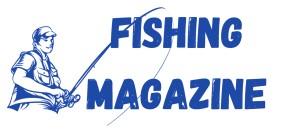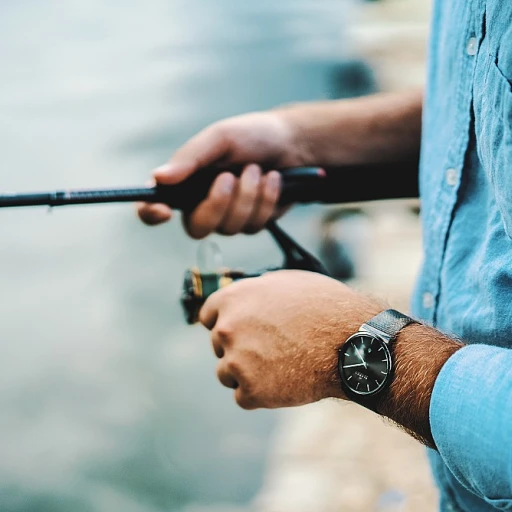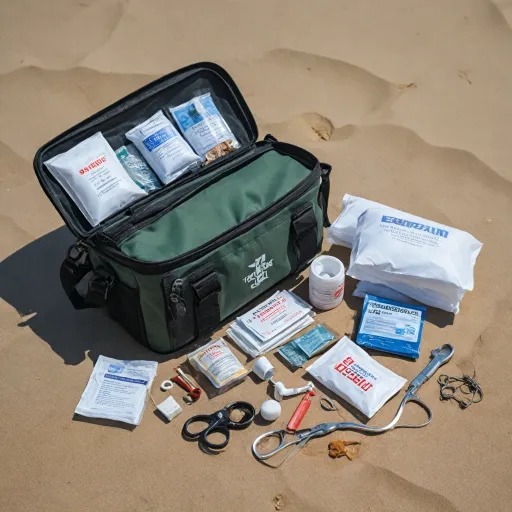
Understanding the Importance of Emergency Beacons
Recognizing the Critical Role of Emergency Beacons
For anglers, venturing into the open waters brings along the thrill of the chase but also poses inherent risks. Whether you're an experienced fisherman or a weekend hobbyist, the unpredictability of weather and water conditions can lead to unforeseen emergencies. This is where emergency beacons become an invaluable tool for ensuring your safety. First and foremost, understanding the critical role of these devices is essential. These personal locator beacons (PLBs) and satellite messengers are engineered to send distress signals when you need help the most. By transmitting your GPS coordinates via reliable satellite networks like Cospas-Sarsat or Iridium, rescue teams can quickly locate and reach you, turning potential disasters into successful rescues. Emergency beacons are a crucial supplement to mobile phones, which might not have reliable service in remote fishing spots. Devices like the ACR ResQLink and Garmin InReach Messenger provide a robust communication line with satellite messaging, ensuring you can send an SOS even when your cell is out of range. With features such as an SOS button and long battery life, these devices enhance your preparedness on the water. For those uncertain about which beacon suits their needs, our upcoming sections will guide you through the different types available, as well as offer tips on integrating them with other safety gear. And remember, just like having adequate kayak storage solutions, keeping a well-maintained beacon should be an integral part of your fishing strategy.Types of Emergency Beacons Suitable for Anglers
Discovering the Varieties to Fit Your Needs
When it comes to emergency beacons, anglers have a range of choices tailored to their needs out on the water. These devices offer peace of mind and are critical for ensuring safety during those unforeseen situations. Here are some of the most suitable options:
- Personal Locator Beacons (PLBs): PLBs like the ACR ResQLink or Ocean Signal RescueME PLB are small, personal devices designed to send distress signals via satellite. They use the COSPAS-SARSAT network, which is an international satellite system dedicated to rescuing people in distress.
- Satellite Messengers: Devices like the Garmin inReach or Iridium GO! allow for two-way text messaging and SOS signaling. They rely on satellite networks such as the Iridium network to keep you connected even in the most remote fishing spots.
- EPIRBs (Emergency Position Indicating Radio Beacons): Although more commonly used for larger vessels, these beacons can be a lifesaver. Similar to PLBs, they transmit distress signals via satellite to operators who initiate search and rescue operations.
For anglers frequently venturing to isolated regions, the availability of devices like the ACR ResQLink View with clear display functions can enhance navigation and assurance. Additionally, units like the Bivy Stick offer flexibility in messaging capabilities and are ideal companions for long fishing trips due to their extended battery life.
Understanding the functionality of each device and assessing your specific needs is crucial. For more detailed information on essential angling gear, check out the ultimate guide to efficient pop-up shelters for anglers.
How to Choose the Right Emergency Beacon for Your Needs
Key Considerations in Selecting the Right Emergency Beacon
Choosing the appropriate emergency beacon for your fishing adventures is essential to ensure you’re adequately prepared for unforeseen situations. With various options available, narrowing down your choices involves understanding key features and matching them to your specific needs.- Beacon Type: Consider the type of beacon that best suits your activities. Personal locator beacons (PLBs) and satellite messengers are popular among anglers. PLBs like the ACR ResQLink are compact and send distress signals to the Cospas-Sarsat network. Satellite messengers, such as the Garmin InReach, offer two-way messaging capabilities and connect via the Iridium satellite network.
- Coverage and Signal Strength: Evaluating the satellite network coverage and the signal capabilities of your chosen device is crucial. Satellite messengers typically provide more comprehensive coverage since they allow for SOS messaging and real-time communication. Conversely, PLBs focus on sending a powerful SOS signal once activated, relying on global satellite networks for assistance.
- Battery Life: Ensure the beacon's battery life suits your fishing duration. Devices like the ResQLink View and RescueMe PLB have varying power consumption rates. Consider your frequency of use and choose a device with a battery life that accommodates extended trips.
- Additional Features: Modern emergency beacons often come equipped with supplementary features that enhance their utility. The Garmin InReach Mini offers GPS navigation, which can be useful in unfamiliar waters. Additionally, some devices allow users to send status updates or non-emergency check-in messages.
- Ease of Use: At its core, the device should be user-friendly, particularly in emergencies where quick action is required. Opt for a beacon with straightforward activation methods, such as a dedicated SOS button and clear instructions for use. Be sure to familiarize yourself with how to send a distress signal prior to venturing out.
- Legal and Registration Requirements: Some PLBs require registration with appropriate national authorities (e.g., NOAA in the US) for full functionality. Ensure compliance with these prerequisites to avoid delays when urgency strikes.
Integrating Emergency Beacons with Other Safety Gear
Seamlessly Integrating Your Emergency Beacon
To ensure you are comprehensively equipped for any unforeseen events while on the water, integrating your emergency beacon with other safety gear is of utmost importance. This strategic approach not only enhances your preparedness but also amplifies your safety protocols.
First and foremost, your emergency beacon, be it a PLB such as the Acr Resqlink or the versatile Garmin Inreach Mini, should complement your existing safety equipment. Consider pairing your beacon with a reliable life jacket. It's a simple step but one that secures your beacon in place, ensuring it is swiftly accessible when needed.
Furthermore, aligning your beacon with a personal GPS device can be highly beneficial. The Iridium Satellite Network, for example, can be utilized to boost connectivity, ensuring that rescue services can pinpoint your exact location with precision.
Don't overlook the importance of a dependable signal distress device, which can work in tandem with your beacon. A unit like the Rescume PLB or the Resqlink View can be essential when communicating with search and rescue teams. Their potent SOS button feature ensures you have a direct line for emergencies.
Additionally, the integration of a satellite messenger can facilitate two-way communication with vital rescue services. This setup allows you to not only send out an SOS call but also receive updates and instructions, providing critical reassurance in distressing situations.
Finally, always keep an eye on the battery life of each device and consider the benefits of a bivy stick or a satellite network subscription for comprehensive coverage. Pairing these devices effectively not only ensures your readiness but significantly increases the chances of a timely rescue.
Real-Life Stories: Emergency Beacons in Action
Remarkable Accounts of Emergency Beacons in Critical Situations
The real impact of carrying an emergency beacon becomes apparent when you hear stories of anglers whose lives were saved by these devices. Emergency locator beacons, when used correctly, can significantly enhance survival chances by providing that crucial distress signal through satellite networks like COSPAS SARSAT. One notable incident involved an angler who got swept away into deeper waters during a storm. The SOLO angler, equipped with a personal locator beacon (PLB), activated the SOS button on their ResQLink device. The distress signal was promptly picked up by the satellite network, triggering an urgent search and rescue operation. Thanks to the beacon's GPS precision, rescuers pinpointed the angler’s exact location, ensuring a successful rescue mission. In another scenario, a recreational fishing group found themselves in a perilous situation when their boat capsized. Fortunately, one member had brought along an Iridium-based satellite messenger which allowed them to use the satellite messaging service to request help. The inReach Messenger they used not only provided their coordinates but also allowed for two-way communication, giving rescuers vital situational updates before they reached the site. Furthermore, anglers often discuss experiences where the reliability of their devices, such as the Garmin inReach or the ACR ResQLink view, provided peace of mind, even if they didn't need to use them. These testimonials highlight the importance of choosing devices with strong satellite connections and dependable battery life. These stories underscore the incredible value of emergency beacons, whether you're using a Bivy Stick or a RescueMe PLB, in ensuring safety and fostering successful outcomes during distress situations. While we hope never to rely on these beacons, knowing they are trustworthy, responsive, and effective makes all the difference for your safety on the water.Maintenance and Best Practices for Emergency Beacons
Maintaining Your Emergency Beacons
Ensuring the effectiveness of your emergency beacons, such as personal locator beacons (PLBs) and satellite messengers, requires regular maintenance and adherence to best practices. These steps not only extend the lifespan of the device but also ensure it operates reliably during emergencies.
Regular Battery Checks
One of the most critical elements of a functioning emergency beacon is its battery. Regularly check the battery life, and be mindful of the expiration date. For devices like the ACR ResQLink and Garmin inReach, checking the charge before each trip is crucial. Replace or recharge as necessary to avoid the device failing when you need it most.
Updating Registration
Many beacons, especially those using satellite networks like Cospas Sarsat, require registration for efficient rescue operations. Keep your device registered and ensure contact details are up-to-date. This helps rescue services initiate a quicker response using the information linked to your distress signal.
Testing Procedures
Manufacturers usually provide guidelines for testing devices safely. This prevents triggering false alarms. Follow these guidelines regularly, particularly for devices like the ResQLink View and inReach Messenger. Testing ensures that your GPS signal and SOS button are working flawlessly.
Physical Inspection
Regularly inspect the beacon for any signs of wear, damage, or corrosion. Devices frequently exposed to marine environments, such as the RescuMe PLB, are more susceptible and require a vigilant inspection for any superficial damage that might impact their operation.
Staying Informed
Stay informed about the latest models and advancements in technology. Devices like the Bivy Stick and inReach Mini continually evolve, offering new features and enhanced satellite communication services. Keeping abreast of these improvements can offer better safety and more efficient distress messaging solutions.


-large-teaser.webp)









